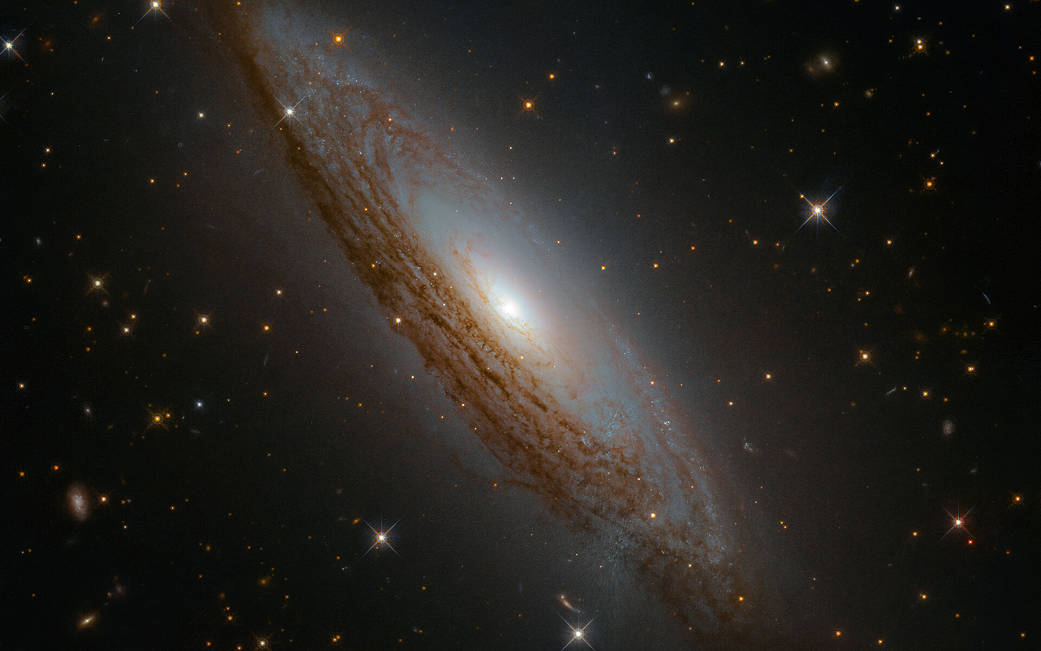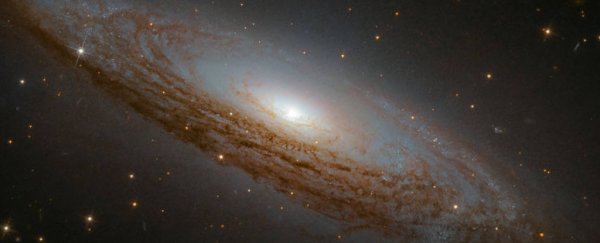There's nothing quite like staring into a celestial abyss to put your life in perspective. Perhaps that's what we all need in 2020.
On the brink of a new year, NASA's Hubble Space Telescope snapped a swirling mass of star dust and gas, known as spiral galaxy ESO 021-G004, and the resulting image is so gob-smacking, it's an instant reminder of how tiny and fragile our home really is.
 (Rosario et al./NASA/ESA)
(Rosario et al./NASA/ESA)
Following its halo of illuminated cosmic matter, this neighbouring galaxy draws the eye inward toward a supermassive black hole lurking within. While most black holes are quiet and invisible, this one is wide awake, and scientists say its insatiable appetite is what makes the galaxy's centre burn so bright.
As cosmic material falls back into the hole, pulled by gravity, it is dragged into orbit, superheated and eventually devoured, emitting a ton of high-energy radiation in the process.
This is what's known as an active galactic nucleus, and some consider it the strongest proof for the existence of supermassive black holes.
Lucky for us, ESO 021-G004 resides a relatively nearby 130 million light-years away, in the small southern constellation of Chamaeleon, which makes it easier for us to keep our eyes on.
